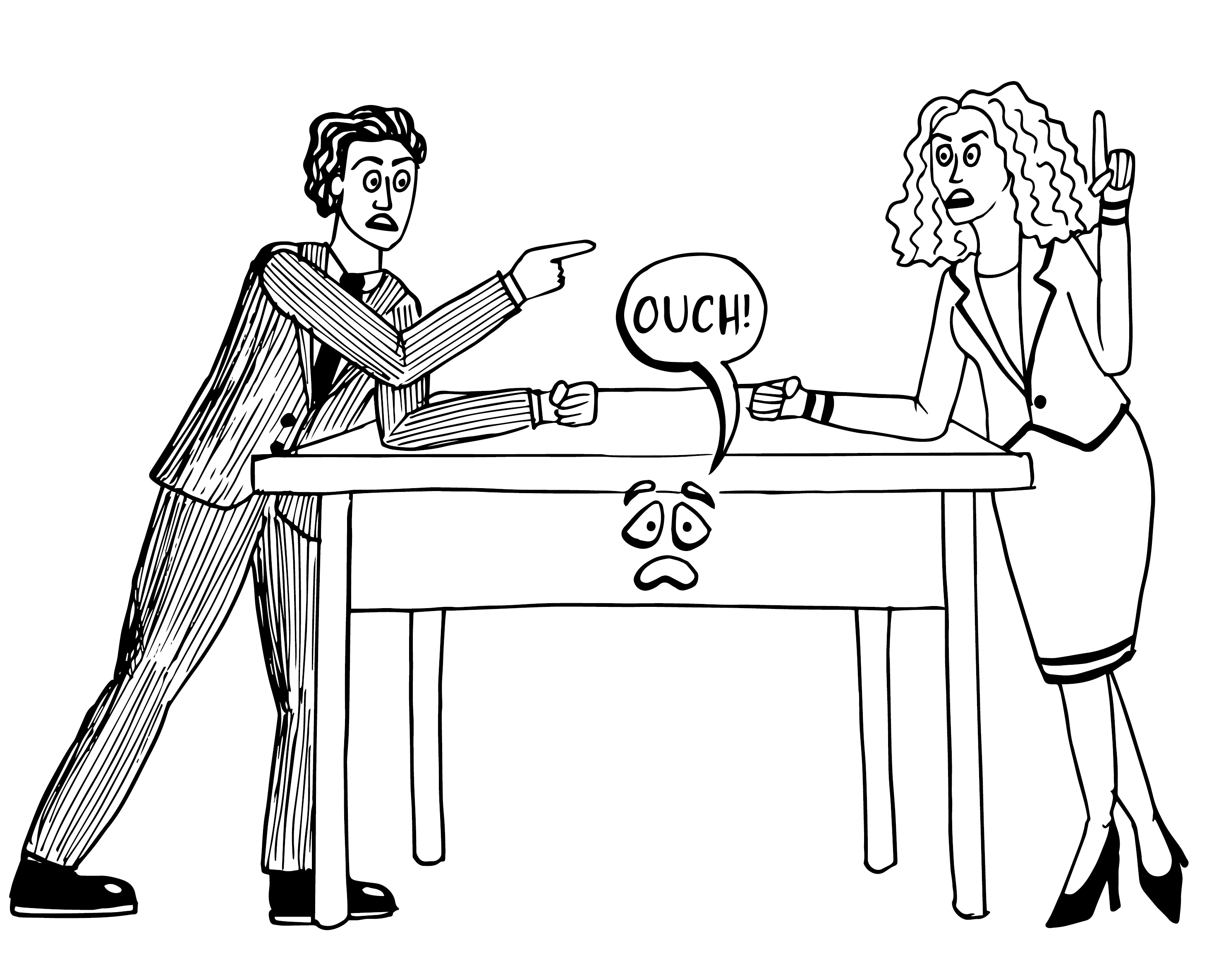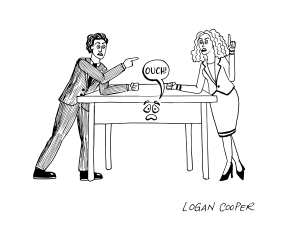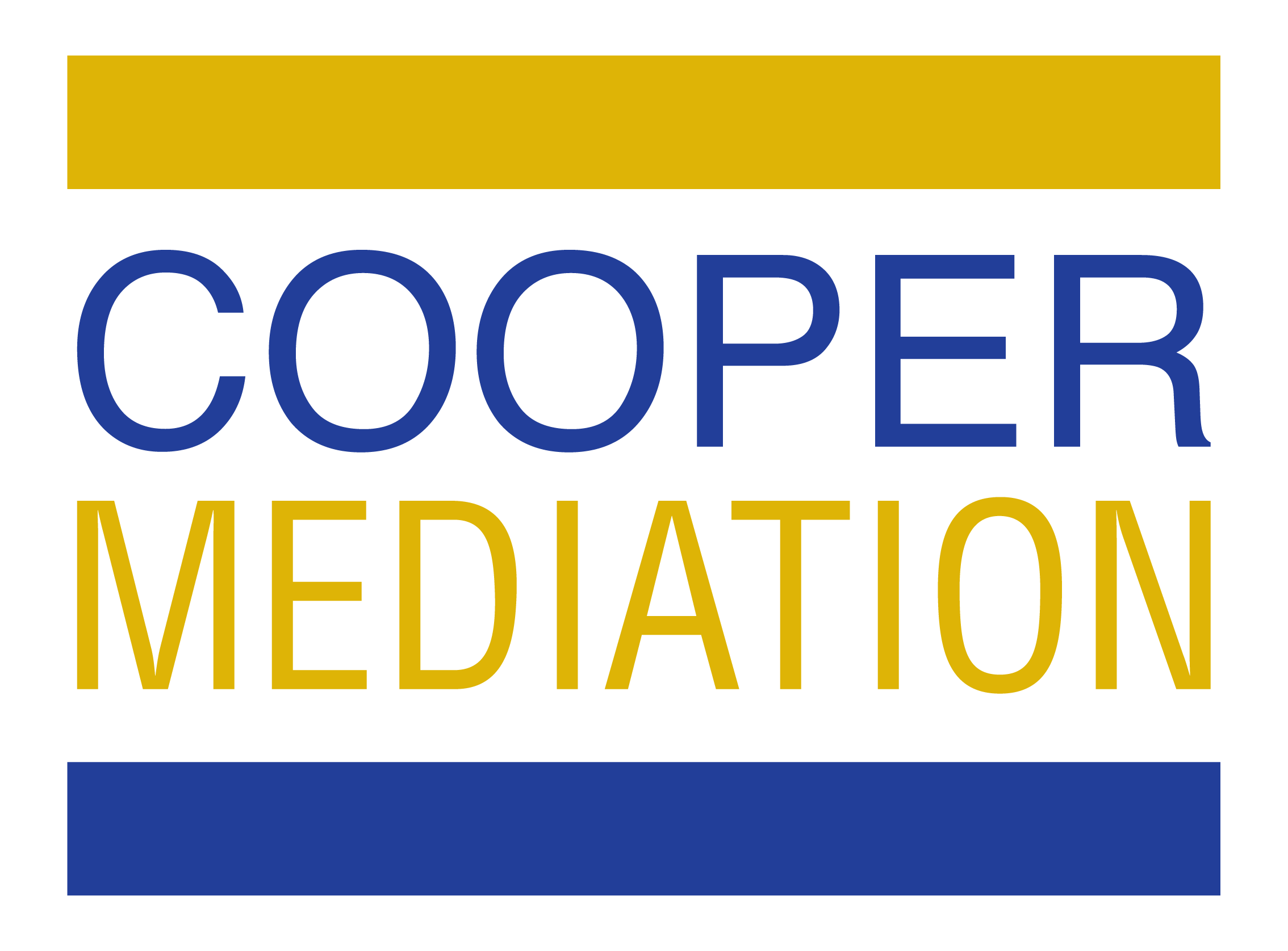
08 Apr Pounding The Table Only Hurts The Table (and Maybe Your Hand)
 Advocates frequently “pound the table” when making a point – usually figuratively, but sometimes literally. Making your point forcefully is certainly one way to command attention. But, is it the best way to achieve your goal in mediation?
Advocates frequently “pound the table” when making a point – usually figuratively, but sometimes literally. Making your point forcefully is certainly one way to command attention. But, is it the best way to achieve your goal in mediation?
In personal injury and insurance litigation, mediation normally begins in a group setting [the plenary session] where opening remarks are delivered across the table. After the mediator has delivered her opening remarks, counsel for the plaintiff typically starts the process before turning the floor over to the counsel for the defendant. I’ve witnessed these opening statements take some interesting turns; unfortunately, they are not always very productive.
Counsel for the plaintiff sometimes reads or paraphrases the mediation memoranda they have delivered. They may tell the defendant why the plaintiff’s credibility is superior or plaintiff’s experts are superior to the defendant’s. Counsel for the defendant may tell the plaintiff that they are neither likable nor credible. They may demean and debase not only the plaintiff’s claim but the plaintiff personally. Thankfully, the literal pounding of the table happens rarely, but this figurative table pounding happens more often.
While each participant has the right to use the strategy of their choice, I would like to suggest a different approach that seems to be more conducive to productive sessions – charm and disarm the decision maker. The explanation and justification for this approach finds its roots in psychology.
Human beings feel discomfort when they hold two or more competing beliefs, ideas or values. This is called the theory of cognitive dissonance. We will always seek ways to resolve this conflict and contraction to reduce our discomfort.
Since humans are already predisposed to devaluing information and proposals from people we consider to be antagonists, even if the “enemy” makes a good point, we may choose to ignore it or dismiss it because they are our opponent.
But what if our “opponent” isn’t completely opposed to us after all? What if we feel as though there is – at least some – agreement and willingness to see our side?
Imagine the surprise on the part of the insurance claims professional to hear counsel for the plaintiff say things with which the former agrees. For example, in a case of contested liability, it would be refreshing for counsel for the plaintiff to acknowledge that there are competing versions of events and that counsel for the plaintiff will take those into consideration when formulating settlement demands. In a case where causation is seriously debated, it would be constructive for counsel for the plaintiff to acknowledge the competing theory and evidence. Acknowledge there is legitimate debate if it is indeed legitimate.
If you are counsel for the defendant, imagine the pleasant surprise on the part of the plaintiff if the first few comments you make are irrefutable and agreeable. For example, if liability is not in dispute, admit responsibility and do so in a way that is understandable to the plaintiff and appears sincere. (Using the term “responsibility” is more understandable than “liability” which leans toward legalese.) You can compassionately acknowledge aches and pains and disruption to life arising from a motor vehicle accident or other mishap while still contesting “threshold”, statutory deductible, causation, etc.
One of my favourite examples of the “charm to disarm” philosophy goes back many years. A defence lawyer opened by telling the plaintiff the following:
“I’m going to tell you something very important. It’s so important that I will tell you at the outset, then I will tell you a number of things with which you may disagree and I will conclude by reminding you of what is important at the end. My client and I are here to pay you money. We are here to provide you with fair and reasonable compensation for the injuries and losses you suffered by reason of xxxxxx. We are guided by the facts as we understand them, the evidence that has been produced on both sides of the table, the law that applies equally to the parties and our analysis of the risk should this matter not be resolved and go forward to trial.”
The defence lawyer went on to review the disagreeable portion of their narrative. These details were provided in an understandable and digestible format. The defence lawyer concluded their remarks as follow:
“I’m going to finish where I started. My client and I are here to pay you money and to compensate you, fairly and reasonably, for your losses suffered by reason of xxxxx.”
When you can agree to some facts, points and arguments presented by the opposing counsel or client (or at least acknowledge they are reasonable if debatable), you demonstrate that you are ready to listen to more of what they have to say. In turn, you may find a more receptive set of ears across the table.
In my next blog post, I will write about “pounding the table in caucus” which raises other issues and considerations.
Click here to download a PDF version of this post.
Other Posts In This Series
- The Snowball Effect: A Little Optimism Can Go A Long Way
- “Not-So-Respectfully Submitted”
- Who’s Carrying The Heavy Bags? : Multi Party Mediations
- Reasonable Is Like Beauty – It’s In The Eye Of The Beholder
ABOUT THE AUTHOR
 Logan Cooper joined the Cooper Mediation team in November, 2017 and now devotes 100% of her professional time to mediation. Contact Logan at: logan@coopermediation.ca or (416) 726-1344. Alternatively, you may view Logan’s Online Calendar to book a mediation: http://coopermediation.ca/logan-coopers-online-calendar/.
Logan Cooper joined the Cooper Mediation team in November, 2017 and now devotes 100% of her professional time to mediation. Contact Logan at: logan@coopermediation.ca or (416) 726-1344. Alternatively, you may view Logan’s Online Calendar to book a mediation: http://coopermediation.ca/logan-coopers-online-calendar/.
“[Logan’s] strengths are her obvious intelligence, ability and (dare I say it?) training…” – Senior Defence Counsel
